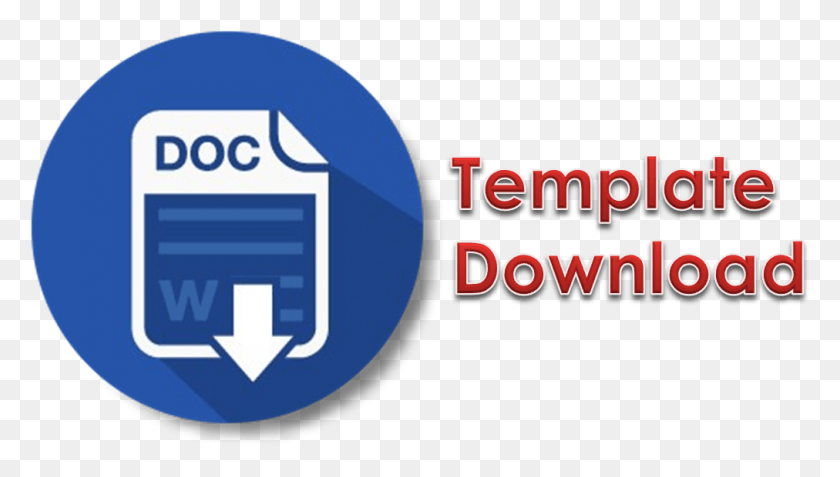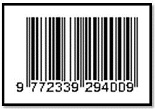Exploring Collaborative Learning in Multimodal Writing: A Study on Student Experiences Using Canva
Abstract
Technology integration in education has become increasingly important, particularly in enhancing collaborative learning and multimodal writing. Platforms like Canva, which allow students to combine text with visual elements, are seen as valuable tools for fostering creativity and improving communication in collaborative projects. However, there is limited research on student experiences using such platforms in collaborative writing tasks, especially in EFL writing classroom. This study aims to explore students' experiences and perceptions of collaborative learning through multimodal writing using Canva, focusing on its impact on writing quality and digital literacy. A qualitative case study was conducted with 36 English Language Education program undergraduate students. Data were collected through semi-structured interviews and reflective journals. The findings reveal that Canva facilitated effective collaboration, improved writing quality, and enhanced creativity by allowing students to integrate graphic elements into their compositions. However, challenges such as technical issues, limited digital skills, and communication barriers were also identified. Despite these obstacles, students employed strategies like peer support, regular check-ins, and using alternative communication platforms to overcome difficulties. The study highlights the importance of providing digital literacy training and ensuring access to technology in educational settings. These findings suggest that platforms like Canva can significantly improve collaborative learning and digital literacy, offering valuable insights for educators seeking to integrate technology into their teaching practices.
Keywords
Full Text:
PDFReferences
K. Holflod, ‘Playful Learning and Boundary-Crossing Collaboration in Higher Education: A Narrative and Synthesising Review’, J. Furth. High. Educ., vol. 47, no. 4, pp. 465–480, 2022, doi: 10.1080/0309877x.2022.2142101.
K. Zhampeissova, I. Kosareva, and U. Borisova, ‘Collaborative Mobile Learning With Smartphones in Higher Education’, Int. J. Interact. Mob. Technol., vol. 14, no. 21, p. 4, 2020, doi: 10.3991/ijim.v14i21.18461.
C. Ren and Q. Zheng, ‘Learning Analytics in Education: A Social Network-Based Approach for Analyzing the Interaction and Influence of Collaborative Learning Communities’, Int. J. Emerg. Technol. Learn., vol. 18, no. 21, pp. 51–65, 2023, doi: 10.3991/ijet.v18i21.44691.
A. Arono, S. Syahriman, N. Nadrah, A. S. Villia, and E. Susanti, ‘Comparative Study of Digital Literacy in Language Learning Among Indonesian Language Education and English Language Education Students in the New Normal Era’, 2021, doi: 10.4108/eai.16-10-2020.2305230.
T. Quraishi, ‘Empowering Students Through Digital Literacy: A Case Study of Successful Integration in a Higher Education Curriculum’, J. Digit. Learn. Distance Educ., vol. 2, no. 8, pp. 667–681, 2024, doi: 10.56778/jdlde.v2i8.208.
S. Purnama, M. Ulfah, I. Machali, A. Wibowo, and B. S. Narmaditya, ‘Does Digital Literacy Influence Students’ Online Risk? Evidence From Covid-19’, Heliyon, vol. 7, no. 6, p. e07406, 2021, doi: 10.1016/j.heliyon.2021.e07406.
L. Susanty, ‘Critical Analysis of the Research on Digital Literacy’, Education, vol. 2, no. 1, pp. 12–25, 2024, doi: 10.61194/education.v2i1.149.
M. Kurni and K. Saritha, ‘Applying Collaborative Learning for Enhancing the Teaching-Learning Process in Online Learning Through Social Media’, Int. J. Emerg. Technol. Learn., vol. 16, no. 16, p. 251, 2021, doi: 10.3991/ijet.v16i16.23207.
I. R. Mega, Y. Yuanita, A. Arsisari, and W. A. Ulfah, ‘Learners’ Digital Literacy in the Online Learning During Covid-19’, English Rev. J. English Educ., vol. 10, no. 2, pp. 699–706, 2022, doi: 10.25134/erjee.v10i2.6314.
X. Zhai, L. Cunyi, and A. B. Razali, ‘Utilization of Online Fan-Fiction to Improve English Literacy Skills Among EFL Undergraduate Students’, Int. J. Acad. Res. Progress. Educ. Dev., vol. 10, no. 4, 2021, doi: 10.6007/ijarped/v10-i4/11678.
E. Peter, V. Rosmayanti, and M. Yahrif, ‘Exploring students’ learning strategies in reading comprehension class’, J. Sci., vol. 12, no. 01, pp. 46–54, 2023.
K. Krismadinata and W. Susanti, ‘Comparison of Collaborative Learning Models to Improve Programming Competence’, Int. J. Online Biomed. Eng., vol. 17, no. 10, pp. 48–58, 2021, doi: 10.3991/ijoe.v17i10.24865.
F. Andriyanti, D. Pratiwi, and D. D. Yunda, ‘Improving Students Writing Skills Through Canva Application at SMP Muhammadiyah Imogiri Yogyakarta’, Int. J. Contemp. Stud. Educ., vol. 2, no. 2, pp. 119–126, 2023, doi: 10.56855/ijcse.v2i2.416.
M. S. Hadi, L. Izzah, and Q. Paulia, ‘Teaching Writing Through Canva Application’, J. Lang. Lang. Teach., vol. 9, no. 2, p. 228, 2021, doi: 10.33394/jollt.v9i2.3533.
M. Li and Z. Yu, ‘Teachers’ Satisfaction, Role, and Digital Literacy During the COVID-19 Pandemic’, Sustainability, vol. 14, no. 3, p. 1121, 2022, doi: 10.3390/su14031121.
G. P. Yustika and S. Iswati, ‘Digital Literacy in Formal Online Education: A Short Review’, Din. Pendidik., vol. 15, no. 1, pp. 66–76, 2020, doi: 10.15294/dp.v15i1.23779.
W. Marisa and E. Djulia, ‘The Relationship of Digital Literacy to Students’ Cognitive Ability in Ecology Course’, J. Pelita Pendidik., vol. 10, no. 2, 2022, doi: 10.24114/jpp.v10i2.26774.
O. O. Adewumi and E. Oladele, ‘E-Skills and Digital Literacy: An Investigation Into the Perceived Competencies of Distance Learning Students in the University of Lagos’, Niu HMS, vol. 8, no. 4, pp. 147–161, 2023, doi: 10.58709/niujhu.v8i4.1739.
D. F. Muntu, O. Y. Yuliana, and Z. J. H. Tarigan, ‘The Influence of Digital Literacy on Learning Effectiveness Through Classroom Management’, Petra Int. J. Bus. Stud., vol. 6, no. 1, pp. 42–52, 2023, doi: 10.9744/petraijbs.6.1.42-52.
K. B. Kalapala and P. Patel, ‘A Systematic Review on Digital Literacy Using Machine Learning Approaches’, Int Res J Adv Engg MGT, vol. 2, no. 11, pp. 3304–3311, 2024, doi: 10.47392/irjaem.2024.0488.
A. A. Alzubi, ‘Examining the Effect of a Collaborative Learning Intervention on EFL Students English Learning and Social Interaction’, J. Pedagog. Res., 2024, doi: 10.33902/jpr.202425541.
Y. Wang and Q. Wang, ‘A Student Grouping Method for Massive Online Collaborative Learning’, Int. J. Emerg. Technol. Learn., vol. 17, no. 03, pp. 18–33, 2022, doi: 10.3991/ijet.v17i03.29429.
V. Rosmayanti and B. M. Sabillah, ‘The Application of eclectic method in teaching young learners in X1 English course in Makassar’, in International Conference on Education, Science, Art and Technology, 2017, pp. 223–231.
A. Blilat and A. Ibriz, ‘Design and Implementation of P2P Based Mobile App for Collaborative Learning in Higher Education’, Int. J. Interact. Mob. Technol., vol. 14, no. 07, p. 115, 2020, doi: 10.3991/ijim.v14i07.13167.
R. D. Poth, ‘Effective Professional Development on AI’. 2023.
M. Q. Patton, Qualitative Evaluation and Research Methods. Newbury Park, London, New Delhi: Sage Publications, 1990.
C. Wilson, Semi-structured interview, 1st ed. Morgan Kaufmann, 2014. doi: 10.1016/b978-0-12-410393-1.00002-8.
V. Braun and V. Clarke, ‘Using thematic analysis in psychology’, Qual. Res. Psychol., vol. 3, no. 2, pp. 77–101, 2006, doi: 10.1191/1478088706qp063oa.
L. Rowe, ‘Educating for the modern world: a report review’, J. Work. Manag., vol. 11, no. 1, pp. 5–16, 2019, doi: 10.1108/JWAM-06-2019-0014.
K. Seltzer, ‘Performing Ideologies: Fostering Raciolinguistic Literacies Through Role-Play in a High School English Classroom’, J. Adolesc. Adult Lit., vol. 63, no. 2, pp. 147–155, 2019, doi: 10.1002/jaal.966.
Y. Assefa, M. M. Gebremeskel, B. T. Moges, S. A. Tilwani, and Y. A. Azmera, ‘Rethinking the Digital Divide And associated Educational In(equity) in Higher Education in the Context Of developing Countries: The Social Justice Perspective’, Int. J. Inf. Learn. Technol., vol. 42, no. 1, pp. 15–32, 2024, doi: 10.1108/ijilt-03-2024-0058.
M. Deiniatur and B. Y. Cahyono, ‘Digital Literacy Practices of Novice English as a Foreign Language Teacher in Writing Research Articles for Publication’, J. Educ. Learn., vol. 18, no. 1, pp. 165–172, 2024, doi: 10.11591/edulearn.v18i1.20899.
O. O. Olaniyi, J. C. Ugonnia, F. G. Olaniyi, A. T. Arigbabu, and C. S. Adigwe, ‘Digital Collaborative Tools, Strategic Communication, and Social Capital: Unveiling the Impact of Digital Transformation on Organizational Dynamics’, Asian J. Res. Comput. Sci., vol. 17, no. 5, pp. 140–156, 2024, doi: 10.9734/ajrcos/2024/v17i5444.
M. Bonato et al., ‘Failure of Digital Device Performance in Monitoring Physical Exercise in a Pilot Study in Sedentary Persons With HIV’, Sensors, vol. 23, no. 23, p. 9461, 2023, doi: 10.3390/s23239461.
N. I. A. B. A. Khalil, ‘Digital Transformation of Teacher Education by Bridging Digital Divide Between Teacher Educators and Prospective Teachers’, Jcte, vol. 4, 2023, doi: 10.58444/jcte.v4i.208.
O. A. Alismaiel, J. Cifuentes‐Faura, and W. M. Al-Rahmi, ‘Online Learning, Mobile Learning, and Social Media Technologies: An Empirical Study on Constructivism Theory During the COVID-19 Pandemic’, Sustainability, vol. 14, no. 18, p. 11134, 2022, doi: 10.3390/su141811134.
S. Donati, G. Viola, F. Toscano, and S. Zappalà, ‘Not All Remote Workers Are Similar: Technology Acceptance, Remote Work Beliefs, and Wellbeing of Remote Workers During the Second Wave of the COVID-19 Pandemic’, Int. J. Environ. Res. Public Health, vol. 18, no. 22, p. 12095, 2021, doi: 10.3390/ijerph182212095.
M. Maurer, N. Bach, and S. Oertel, ‘Forced to Go Virtual. Working-From-Home Arrangements and Their Effect on Team Communication During COVID-19 Lockdown’, Ger. J. Hum. Resour. Manag. Zeitschrift Für Pers., vol. 36, no. 3, pp. 238–269, 2022, doi: 10.1177/23970022221083698.
DOI: https://doi.org/10.31764/leltj.v13i1.31419
Refbacks
- There are currently no refbacks.
Copyright (c) 2025 Vivit Rosmayanti

This work is licensed under a Creative Commons Attribution-ShareAlike 4.0 International License.
_____________________________________________________
Linguistics and ELT Journal
p-ISSN 2339-2940 | e-ISSN 2614-8633

LELTJ is licensed under a Creative Commons Attribution-ShareAlike 4.0 International License.
_____________________________________________________
LELTJ is abstracting & indexing in the following databases:
_____________________________________________________
LELTJ Editorial Office:













